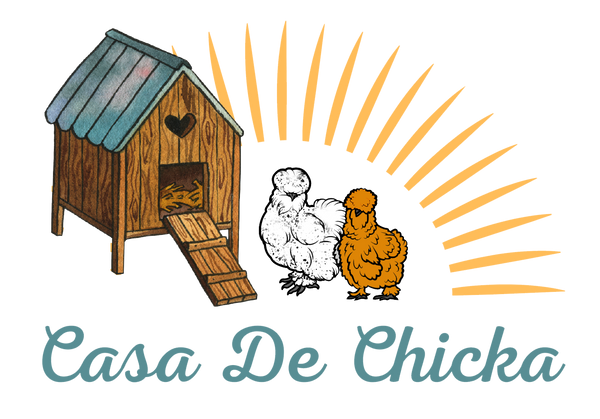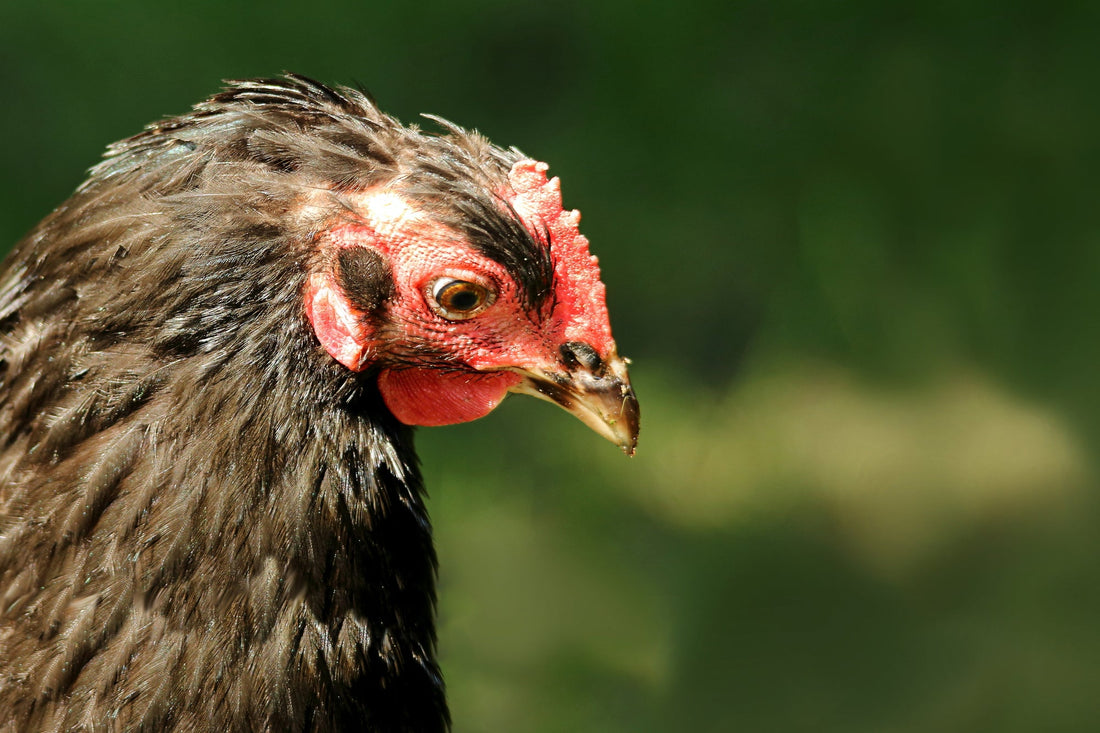As the seasons change, so do your chickens. One of the most significant seasonal changes for a chicken is molting, a natural process where they shed old feathers and grow new ones. Molting can be a challenging time for chickens, as it requires a lot of energy and can leave them more vulnerable to stress and illness. For chicken owners, understanding the molting process and knowing how to support their flock through it is crucial. This blog will explain what molting is, why it’s important, and how you can help your chickens stay healthy during this period.
What is Molting?
Molting is the process by which chickens shed their old, worn-out feathers and replace them with new ones. This process typically occurs once a year, usually in the late summer or early fall, although the timing can vary depending on factors such as the chicken’s age, breed, and environmental conditions.
There are two main types of molting: partial and full molt. During a partial molt, chickens lose and regrow feathers in specific areas, such as the neck, breast, or wings. In a full molt, chickens shed feathers all over their body, which can leave them looking patchy or almost bald for a period of time.
Molting can last anywhere from 8 to 16 weeks, with the duration varying based on the individual chicken. The process is driven by changes in daylight and hormone levels, signaling to the chicken’s body that it’s time to renew their feathers. While molting might seem like a simple feather-shedding process, it is actually a complex biological event that plays a critical role in a chicken’s overall health and well-being.
The Molting Process: What Happens to Chickens?
When chickens molt, their appearance can change dramatically. Feathers fall out, sometimes in large clumps, leaving bald patches on their body. As new feathers start to grow in, these areas become covered with pin feathers—sharp, quill-like growths that gradually unfurl into full feathers. During this time, chickens may look a bit scruffy or unkempt, but this is a normal part of the process.
Molting not only affects a chicken’s appearance but also has a significant impact on their egg production. Most chickens will either reduce or completely stop laying eggs during molting. This is because the energy that would normally go into producing eggs is redirected towards feather regeneration. This reduction in egg production can be frustrating for chicken owners, but it’s important to remember that it’s a temporary and necessary phase.
Behaviorally, chickens may become more withdrawn or irritable during molting. The process can be uncomfortable and even painful, particularly as new feathers start to grow in. You may notice that your chickens are less active, spend more time resting, or seem more sensitive to handling. These changes in behavior are normal and usually resolve once the molt is complete.
The Importance of Molting for Chickens
Molting is not just a cosmetic process; it’s a vital part of a chicken’s life cycle. Feathers are essential for a chicken’s survival—they provide insulation, protection from the elements, and aid in flight (even though most domestic chickens aren’t strong fliers). Over time, feathers become damaged and less effective at performing these functions, so replacing them with new, healthy feathers is crucial.
New feathers provide better insulation, helping chickens stay warm in colder weather. They also offer better protection against moisture and pests. Additionally, molting allows chickens to shed any parasites that may be living in their old feathers, reducing the risk of infestations.
While molting is an energy-intensive process, it’s necessary for maintaining the health and well-being of your flock. A successful molt results in a stronger, healthier bird with improved feather quality, which in turn supports better egg production and overall vitality.
Nutritional Needs During Molting
Molting places significant demands on a chicken’s body, particularly in terms of nutrition. Feathers are composed primarily of protein, so during molting, a chicken’s need for protein increases substantially. To support feather regrowth, it’s important to adjust your chickens’ diet to provide extra protein and other essential nutrients.
Switching to a high-protein feed during molting can help meet these increased nutritional needs. Many chicken owners also supplement their flock’s diet with protein-rich treats like mealworms, sunflower seeds, and cooked eggs. In addition to protein, ensuring your chickens have access to fresh water at all times is crucial, as dehydration can slow down the molting process and affect overall health.
Adding vitamin and mineral supplements to your chickens’ diet can also be beneficial. Products designed specifically for molting chickens are available and can help ensure they get the nutrients they need during this demanding time.
Environmental Adjustments for Molting Chickens
Creating a comfortable and stress-free environment is key to helping your chickens get through molting. Molting can be physically exhausting, and chickens are more vulnerable to cold weather during this time due to their reduced feather coverage. Ensuring that your coop is well-insulated and free from drafts can help keep your chickens warm and comfortable.
Maintaining clean and dry bedding is also important during molting. Damp or dirty bedding can exacerbate the discomfort of new feather growth and increase the risk of infection. Regularly changing the bedding and keeping the coop clean will provide a healthier environment for your molting chickens.
Reducing stressors in the environment is another important consideration. Loud noises, overcrowding, or changes in routine can all contribute to stress, which can in turn negatively impact the molting process. Providing a quiet, calm space where chickens can rest and recover will help them get through molting more smoothly.
Health Monitoring During Molting
While molting is a natural process, it’s important to keep an eye on your chickens’ health during this time. Some chickens may be more prone to health issues during molting due to the stress and energy demands of the process. Common problems to watch for include respiratory issues, feather picking, and signs of malnutrition.
Regularly checking your chickens for signs of illness, such as lethargy, coughing, or changes in eating habits, can help you catch any potential problems early. If you notice any of these signs, it’s important to take action quickly to address the issue and prevent it from worsening.
In some cases, molting can be so severe that it leads to a condition known as “soft molt,” where chickens lose feathers gradually over a prolonged period rather than all at once. While this is not necessarily harmful, it can be uncomfortable for the chicken and may require additional care to ensure they stay healthy.
Supporting Chickens Emotionally During Molting
Molting can be a stressful and uncomfortable time for chickens, and it’s important to provide emotional support as well as physical care. Chickens are social animals, and the molting process can disrupt the social dynamics within the flock. Chickens that are molting may be more likely to be picked on by others, which can add to their stress.
To minimize stress and promote harmony within the flock, consider providing extra space in the coop and run so that molting chickens can avoid conflicts. Offering treats and distractions, such as hanging vegetables or scattering grains, can also help keep chickens occupied and reduce pecking behavior.
Showing patience and understanding towards your molting chickens is key. Avoid handling them more than necessary, as new feathers are sensitive and can be painful to the touch. Providing extra care and attention during this time will help your chickens feel more comfortable and secure.
Addressing Common Molting Myths
There are several myths and misconceptions surrounding molting that can lead to misunderstandings about the process. One common myth is that molting chickens are sick or unwell. While molting can make chickens look less than their best, it’s a natural and healthy process that all chickens go through.
Another myth is that forced molting—inducing molting by withholding food or manipulating light exposure—is necessary to maintain egg production. However, forced molting is stressful and can harm the chicken’s health. It’s best to let molting happen naturally and provide the necessary support to help your chickens through it.
Understanding the truth about molting can help you provide better care for your flock and avoid unnecessary stress or interventions.
Preparing for the Next Molting Season
Once molting is complete, it’s important to continue providing good care to help your chickens recover and prepare for the next season. Ensuring that they have a balanced diet, a clean environment, and regular health checks will help them regain their strength and get back to their normal routine.
As you look ahead to the next molting season, consider what worked well and what could be improved in your care routine. Being proactive in your approach will make the next molting season easier for both you and your chickens.
Molting is a natural and essential part of a chicken’s life cycle, but it can be a challenging time for your flock. By understanding the molting process and providing the right support, you can help your chickens stay healthy and comfortable during this period. From adjusting their diet to creating a stress-free environment, there are many ways to support your chickens through molting and ensure they come through it stronger and healthier.

